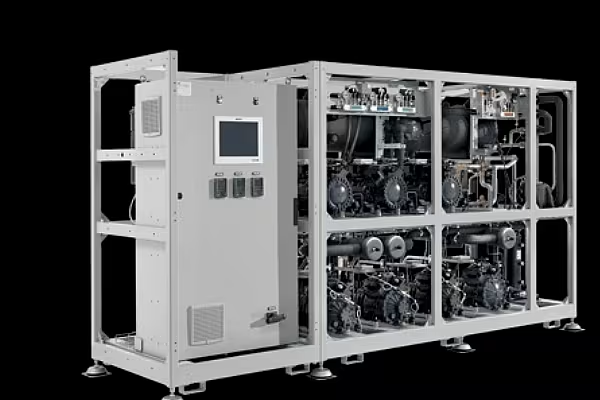As part of our Retail Technology report, ESM reached out to leading retail executives to get their perspectives on several salient topics when it comes to digital transformation – including Oskars Štops, IT Dept. Director, Maxima Latvija. This article first appeared in ESM's March/April 2024 edition.
Last year, Maxima Latvija expanded its Scan&Go digital service, offering contactless shopping at all large-format Maxima XX and Maxima XXX stores across Latvia. This led to purchases made using Scan&Go increasing by 4.8% last year.
Building on from that, at the start of 2024, the retailer began the roll-out of next-generation self-checkout outlets in stores, with some 130 units set to be installed over the coming year.
“For years, Maxima has been systematically introducing and developing various technologies to streamline processes in stores,” says Oskars Štops, IT department director. “These next-generation self-checkout counters are equipped with a larger screen, including a more user-friendly product catalogue, more spacious areas for placing items in the basket, and improved performance, making the process of scanning and shopping faster.”
Do you think that we have reached a tipping point in terms of technology adoption by retailers, and if so, why?
While we have made significant advances in integrating technology into various aspects of retail operations, it feels like we are on the edge of a breakthrough. We are just beginning to grasp the full potential of these technologies and how they can revolutionise the retail landscape.
However, it’s important to acknowledge that the journey to widespread adoption is ongoing. While technology holds immense promise, there is still a learning curve for both retailers and consumers.
As retailers, we must remain agile and adaptable, continuously exploring new ways to leverage technology to enhance the customer experience and drive business growth. Our customers, too, are adapting to the changing retail landscape, increasingly embracing technology-enabled solutions for their shopping needs.
How do you expect data analytics and insights to shape decision-making processes for supermarkets in the future?
As a retailer, we recognise the critical role of data analytics and insights in shaping our decision-making processes, and we’ve been actively leveraging them to enhance our operations.
Our approach is already data driven, particularly in understanding what products resonate with our customers, based on their purchasing behaviours.
For instance, we know that value for money plays a significant role in purchasing decisions, and we continue to strategise on promotions and discounts, to provide what the customer needs. The proof point of this strategy is acknowledged by the Best Price-Quality Ratio award by Icertis, which we have held for several years.
While Maxima, in the retail industry, is the leader in Latvia, it’s the insights derived from our research efforts that serve as a foundation for others in the sector.
The annual research conducted by Maxima Latvija, now evolved into the Maxima Retail Compass, serves as a cornerstone for understanding shopping habits and trends among Latvian residents. Its purpose is to provide analysis on the current situation and the impact of macroeconomic indicators on household incomes and expenditures. In essence, data analytics not only form our current decisions, but also guide our future strategies, ensuring that we remain agile and responsive to evolving consumer demands.
To what degree do you think that artificial intelligence and machine learning will influence the retail industry over the coming years?
The impact of artificial intelligence and machine learning on the retail industry in the coming years is poised to be substantial.
For instance, at Maxima Latvija, the ordering of goods is increasingly reliant solely on AI, automating this process significantly. Techniques such as voice commands are utilised to manage inventory in our warehouses, and technological solutions optimise space utilisation, including the implementation of ‘very narrow aisle’ systems.
These technologies offer immense potential, not only in automating manual tasks, but also in providing actionable insights.
What challenges, if any, do you anticipate for retailers in terms of integrating new technologies into their operations?
Technology should be seen as a tool to support our commitment to customer needs. Therefore, any technological integration must be thoroughly assessed, to ensure it assists us in effectively working to meet customer needs, which means: deliver low prices.
Apart from increased efficiency, we also recognise the potential of new technologies to improve the overall customer experience. We are exploring the use of advanced data analytics to gain deeper insights into consumer behaviours and preferences.
By analysing customer data, we personalise marketing strategies and tailor product offerings by focusing on pricing strategies, to better meet the needs of our customers.













